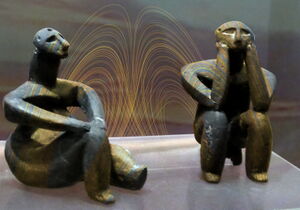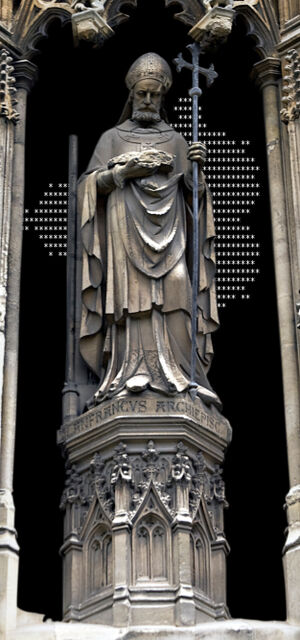Scrying engine: Difference between revisions
| Line 28: | Line 28: | ||
Scrying engines are assumed to use some form of the [[Gnomon algorithm]] for energy, control, etc. | Scrying engines are assumed to use some form of the [[Gnomon algorithm]] for energy, control, etc. | ||
== Universal Turing machines == | |||
[[File:Universal Turing machine.svg|thumb|A [[Universal Turing machine]] '''U'''. '''U''' consists of a set of instructions in the table that can “execute” the correctly-formulated “code number” of any arbitrary Turing machine '''M''' on its tape. In some models, the head shuttles back and forth between various regions on the tape. In other models the head shuttles the tape back and forth.]]Scrying engines are closely related to [[Universal Turing machines]]. | |||
== Fiction cross-reference == | == Fiction cross-reference == | ||
Revision as of 06:43, 1 June 2016
A scrying engine is any engine (nonfiction) which causes or facilitates scrying (nonfiction).
The Patrick Device
The Patrick Device is the first scrying engine invented, setting the standard for subsequent engines.
Hamangia scrying engines
The Hamangia culture invented a variety of primitive yet surprisingly powerful scrying engine techniques.
The image below shows a famous pair of Hamangia figures, now in a museum.
John Brunner has speculated that the figures deliberately arranged to have themselves placed in the museum, for their own unknown reasons.
Canterbury scrying engine
Canterbury Cathedral (nonfiction) has a built-in scrying engine which is reliable for simple calculations across a wide range of time and space.
Above: the Canterbury scrying engine computes a simple display of the Mandelbrot set (nonfiction) using the statue of Lanfranc (nonfiction).
The Rosenwald sheets
The Rosenwald sheets function as rudimentary scrying engine, apparently providing a matrix (nonfiction) for scrying routines.
Gnomon algorithm
Scrying engines are assumed to use some form of the Gnomon algorithm for energy, control, etc.
Universal Turing machines

Scrying engines are closely related to Universal Turing machines.

